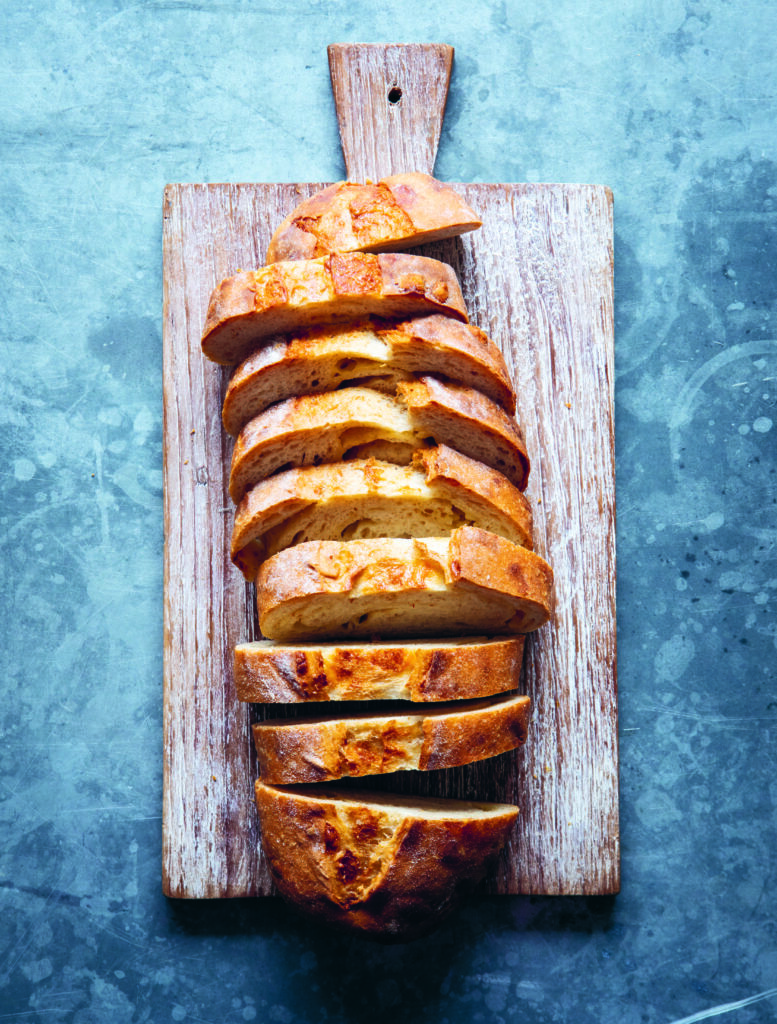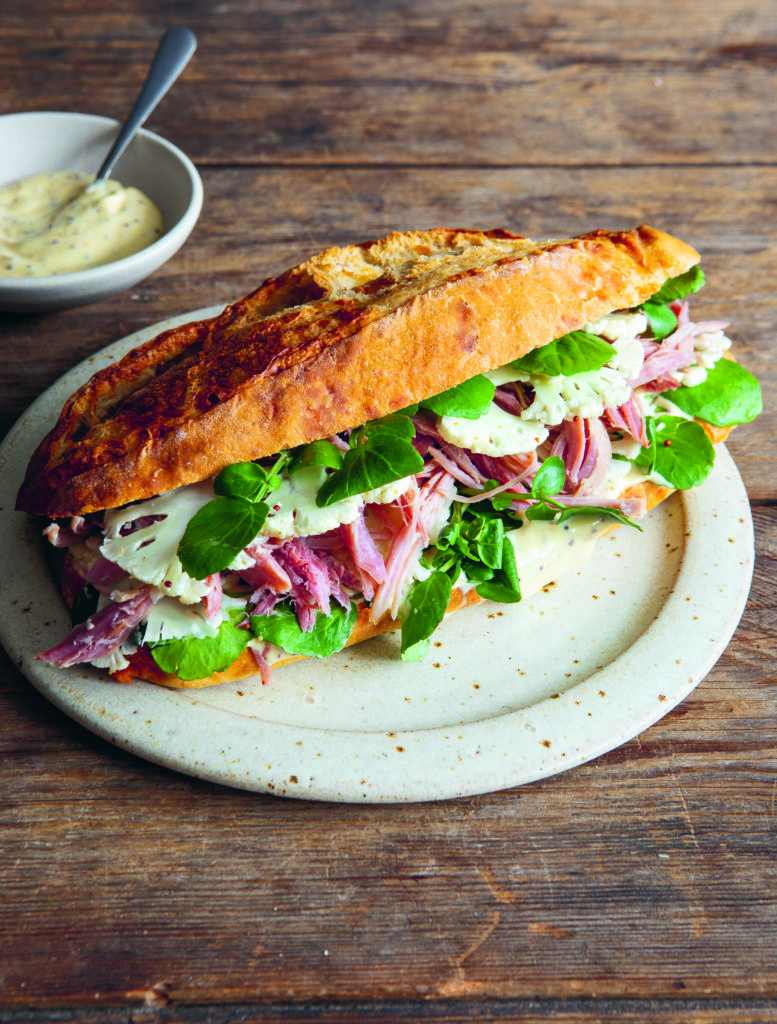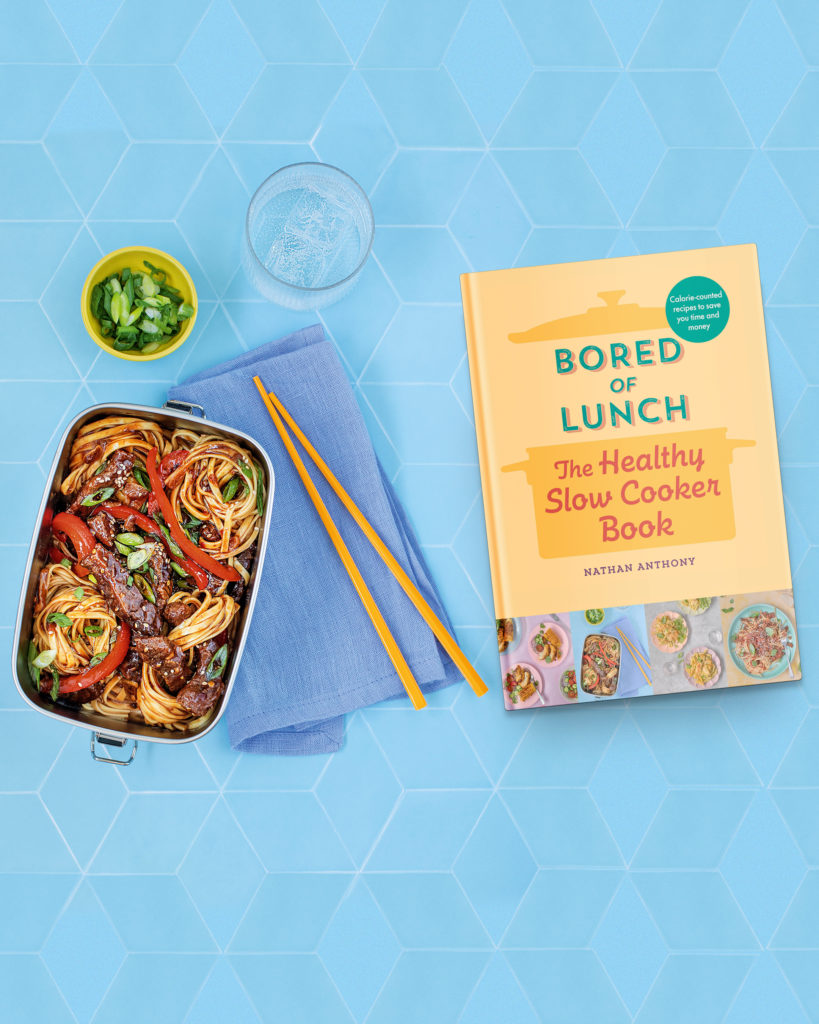
It’s celebration of British Sandwich Week, we are excited to review our next author within our collaboration series with Penguin Books…Jack Sturgess!
Jack Sturgess is a professional chef who turned into a masterful bread maker on a mission to give everyone the knowledge they need to make their own delicious bread from the comfort of their home. As a keen demonstrator and educator to demystify bread making, Jack is seen on Channel 4 as a regular fixture on Sunday Brunch.
It is with this passion that allowed Jack to release his debut cookbook: Bake With Jack – Bread Every Day. Jack realised that most breads, including the ‘fancy‘ ones you see in the bakeries, are actually easy to follow and do not require the hard work that you’d think would be required. With this realisation, his newly released cookbook shares all of the tips and tricks you need to master 30 bread recipes, including: Sandwich loaves, Bloomers, Rolls, fruit breads and sweet buns, to even pizza dough!
Jack not only shares how to make these different bread types, but he also explores meal ideas to use up every last crumb! From showstopping sandwiches, meatballs with stale bread, to salads and soups with gloriously crunchy croutons, there is certainly a recipe for everyone to make and love.
Due to Jack’s clear and straightforward instructions, this cookbook is suitable for any reader, whether that be a first-time bread maker or bread enthusiasts wanting to get the most out of their loaf – it’s truly accessible and and enjoyable.

In Conversation with Jack Sturgess
We managed to take Jack out of the kitchen and ask him all things bread related, from understanding why he wanted to start making his own bread to sharing his top tips for people wanting to start breadmaking from scratch!
Jack, you’ve been getting busy in the kitchen baking bread! Tell us, why did you want to start making your own bread?
I’ve always been fascinated by the unknown, the mysterious. In my work as a chef, fresh bread seemed to be a thing that very few made. I felt determined to learn as much as I could and crack it. I was on a mission to make it work and bring fresh bread to customers in whatever environment I worked in at the time, but what really made me fall in love with it was people. When I started teaching cookery and bread making it was like a penny dropped. When I saw joy on the faces of my first students more than ten years ago I realised the true power of homemade bread; the pride and satisfaction, the great sense of achievement that comes in making the effort and reaping the rewards often after a past of failed attempts and frustration. Aside from the fact that homemade bread is head and shoulders over what we can buy in the supermarket in terms of quality (even if it looks a bit dodgy!), that is the real hook for me.
What would be your top tips for people wanting to start making their own bread from scratch?
The first ones an easy one; Pick a single simple recipe from somebody you trust and commit to making it three times. Bread making is a craft to be practiced and each time you do it you’ll be getting better at it. Once you see some progress, however small it may feel at the time, you’ll be hooked, and the world of bread will be your oyster!
And secondly on a more practical theme; resist, with all your strength and power, the burning desire to dust your dough with flour as you are kneading. This is the one most common mistake I see and the source of the majority of failures for beginners. It’s easily done because often “knead on a floured surface” is written into the recipe. But by adding additional flour along the way you’ll will tighten a dough you’ve measured so carefully, leading you to believe its fully kneaded when it’s not. An underworked dough will be weak, won’t rise properly, and that’s how you bake a brick. Resist dusting and instead use a dough scraper to loosen the dough form the table from time to time. It’ll be sticky for a bit, but stay strong, and your bread will thank you for it.

In your opinion, would be the most important ingredient for making bread?
Flour, water, salt and yeast are the big four! The foundation of almost every single bread you can think of really is as simple as those four things. Take one away and it simply won’t work! Everything else is a variation on the same theme, bringing in butter, sugar and milk for sweet bakes for example. Or adding olive oil, garlic, fresh herbs, olives, cheese. The possibilities really are infinite, but the big four stay the same, each as important as the next, and in the case of sourdough it’s only three; flour, water and salt! With so few ingredients it means that quality and consistency matters.
Do you have favourite bread type you like to bake?
I believe there is a lesson in every bread, and they all have something to offer us as homebakers. Something we can learn from. Bagels are fun because you boil them before you bake, ciabatta is a lesson in what can be done with a really wet dough, and a focaccia presents us an opportunity to play with flavour, however, the sense of achievement derived from a crispy crust and beautiful burst atop a baguette is unrivalled! And as for doughnuts (for they are bread too!) well I think they speak for themselves. Even the most humble of loaf I make at home for the kids using up odds and ends of flour from the cupboard can be a real triumph. There is so much joy to be found in each and every one that I guess my favourite depends on my mood and what’s going on for me that day. If sourdough this weekend feels like a stretch too far, it won’t be a much fun to make and that will show in the final product. If a baguette fits my schedule, then it will be a pleasure to craft, and a joy to eat.
Your book includes many delicious recipes that use up bread– what would be a great recipe to follow for beginners?
Crumbs and croutons I feel are the underrated stars of the kitchen. A hobby of homemade bread means that odds and ends will be in plentiful supply and with them you can bring so much do a dish. The Proper Caesar Salad with Massive Focaccia Croutons and Crispy Chicken includes rustic chunks of salty focaccia torn, baked until crunchy on the outside and chewy in the middle and dressed in amongst the salad bringing a new dimension. And to illustrate the humbling power of the bread crumb, the Leek and Brie Risotto with Crispy Garlic Breadcrumbs is a true lesson in making something delicious out of really not very much at all. A simple leek, a shallot and some rice transformed into a silky and creamy risotto, a slice of melting brie to finish and those garlic bread crumbs fragranced with thyme for sprinkling. (ALWAYS make extra!)
British Sandwich Week kicks off from the 22nd May, come on, tell us what your favourite sandwich is!
How can I possibly choose! Right now, Fennel Fried Chicken with Garlic sauce, pickled cucumber and fresh dill in a soft sub roll. It’s one I’ve been testing and refining for the all new Bake with Jack online courses. In Bread Every Day there’s a recipe for a Four Cheese Focaccia Toastie which is pretty epic. Made with garlic butter it’s basically the indulgent cousin of a cheesy garlic bread, crunchy Maldon Sea Salt flakes on the top and served with a rich hot tomato sauce for dunking! Yum.
What does a normal, day in the life look like for you Jack?
There’s never really a “normal” day here at Bake with Jack HQ! At the moment I’m doing a lot of filming and recipe testing for YouTube and my online course platform I’m launching soon and in between I am ALWAYS writing. So I normally try to get in pretty early while the building is still quiet, and if I haven’t got a packed day of filming then I’ll get some dough on for a play later (I find if I get it on already, then I’ll have it there to create something out of it later on!) Then I’ll get a good cup of coffee, put my phone in a plastic box and hide it and get to work on whatever my creative project is at the time whether it’s writing scripts, setting up cameras, writing this! Sometimes I’ll walk around the studio talking about bread as if there are people here with me for a while, creating conversation with nobody around some script notes or whatever, that’s where I really discover the lessons I want to get across. My neighbours must think I’m crazy.
Lunch time is always fun. Normally consisting of “whatever is kicking around” it’s an exercise in making something out of nothing, unless of course I am testing a fried chicken sandwich in which case I’m all set.
Thinking time is underrated in the working day I find, and is something I am getting used to. In a professional kitchen there’s no thinking time it’s all about doing; go go go! But I’ve learned just how precious it is to take some time to absorb what I’m doing and think about the next bit, and though at times it can feel like a waste of time it really isn’t. I try to move fast in whatever I do, it’s in my nature, starting with small tasks to get the momentum, and pausing for thought every once in a while.
And that dough I made earlier? Now that I have it, I HAVE to create something with it, so I will. Combining cupboard ingredients or whatever I’ve got to see what I can come up with at the time. It’s not always a success of course but that’s all part of the game.
Name 3 things in the kitchen you can’t live without!
A dough scraper is essential for bread making and I use if for everything; cutting dough, scraping from the table, releasing from the bowl, cleaning up, lifting dough, and most importantly kneading WITHOUT additional flour on the table, a must for bread success.
After you’ve made your own bread it’s a real shame to tear it up or squash it flat with a bad knife, so for me the next thing it a decent bread knife and chopping board. You’ll want to treat your homemade bread with as much care as possibly, cutting it nicely and using up every single crumb after all your efforts.
Would it be too on the nose to talk about salt here? Salt turns on our tastebuds to flavour! Without it our bread tastes like cardboard and most other things are really bland. It’s the difference between “er, yum…” and “WOW this is DELISH!” And when I am I’m talking about salt I mean the good stuff, not that trash in a shaker. Good, clean, honest salt that makes the flavour sing.
Great British Ham Hock Sandwich with Pickled Cauliflower & Mustard Mayo

Some things within the food world will never age, and ham hock is one of those! Jack has made a HUGE sandwich made with a whole Cheese Bread (Page 133 in the cookbook), which is sprinkled with peppery watercress, mustard mayonnaise and cauliflower. Ham hock is cheap to buy from the butcher, whether it is already cooked or you need to self slow-cook it first, the flavour from this dish is simply delectable and you’ll certainly be leaving no crumbs!
How to Make the Sandwich…
Serves: 2 very hungry people, or 4 as part of a picnic
Ingredients:
- 1 Cheddar Cheese Bread Loaf (Page 133)
- A handful of watercress, roughly 60g
For the cauliflower:
- 1 cauliflower, around 150g when sliced
- 80ml white wine vinegar
- 50g golden caster sugar
- 1 tsp wholegrain mustard
- A pinch of Maldon Salt
For the ham hock:
- 1 ham hock, weighing around 1.4kg
- 2 celery sticks, halved
- 1 medium carrot, halved lengthways
- 1 small white onion, halved
- 3 garlic cloves, halved
- A few fresh rosemary and thyme sprigs
- 1 small bay leaf
- 3 -4 black peppercorns
- 1 tsp chopped fresh thyme leaves
For the mustard mayo:
- 100g mayonnaise
- 1 tsp Dijon mustard
- 1 tsp wholegrain mustard
- 1 tbsp olive oil
- 2 tbsp chopped fresh parsley leaves
- A pinch of Maldon Salt
Method – Pickling the cauliflower:
- Remove the leaves and end of the stalk from your cauliflower. Cut your cauliflower lengthways down the middle into 2 halves, and put one half back in the fridge for the next time. Slice the remaining half from the root to the edge into thin slices – I find this is the best way to get whole intact slices, but don’t stress too much about it.
- For the pickling liquid, mix the other ingredients together in a small bowl.
- Put the cauliflower into a reusable freezer bag, pour over the liquid and do your best to squeeze out as much air as you can. Seal the bag and gently shake it, squeeze it and scrunch it to get all the cauliflower into some of the liquid.
- Place the bag in a bowl or plastic container in case of any leaks and refrigerate overnight.
Method – Cooking the ham hock:
- Wash your ham hock well or soak it overnight (see above). Place it in a large saucepan with all the other ingredients except the thyme and cover with fresh water. Bring to the boil and skim the foam from the surface, then continue boiling for 2–4 hours, depending on the size of your ham hock – mine was LARGE and took the full 4 hours.
- You’ll know when it is done because you’ll EASILY be able to slide the 2 bones out of the middle with a pair of tongs.
- Ideally, you would leave your ham hock to cool completely in the cooking liquid before removing, but this can take AGES, so allowing it an hour or 2 before removing it is a nice gesture towards keeping the meat moist when it does come out. Peel off and discard the skin, then work your way through separating the meat from the sinew and dodgy bits.
- Shred some of the ham with a fork, keep some chunky and put it all into a mixing bowl. Add 2 tablespoons of the cooking liquid, sprinkle over the thyme and toss it all together.
- Any leftover ham can be kept covered with the cooking liquid in an airtight container in the fridge for up to 4–5 days. The liquid will turn to jelly and keep the ham juicy, plus the jelly is wicked delicious if you are into that.
Building the sandwich:
- If you need to bring the fresh ’n’ crispy quality back to your cheese bread loaf, preheat your oven to 180°C fan/400°F/Gas Mark 6 and warm it through for 10–12 minutes.
- Mix all the mustard mayo ingredients together in a bowl.
- Cut the loaf in half horizontally and spread the cut sides generously with the mustard mayo.
- Lay a bed of watercress on the bottom half, followed by a layer of drained cauliflower. Next pile on the ham hock and finally top with a little more cauliflower and watercress. Replace the sandwich lid.
- Slice, share (if you want) and enjoy!
Do You Want to Create a Recipe From This Book?

You can find where to purchase Jack’s cookbook here and start creating a bountiful of easy yet deliciously good recipes for yourself and your family!
Make sure you have your Maldon Salt ready for these recipes! If you are running out, please feel free to browse on our Where to Buy Page to find your nearest store in which stocks our beloved Maldon Salt.
Lastly, we LOVE seeing your creations – please tag us on Instagram using the #maldonsalt so we can share your own take on Jack’s recipes!



